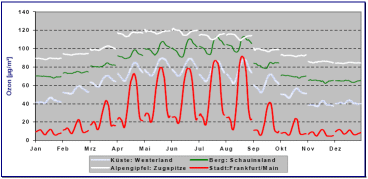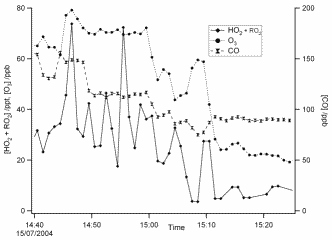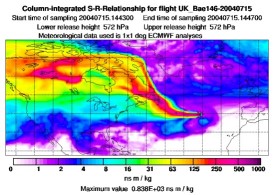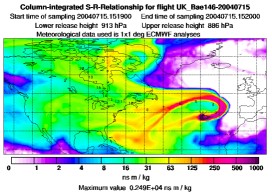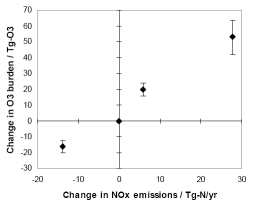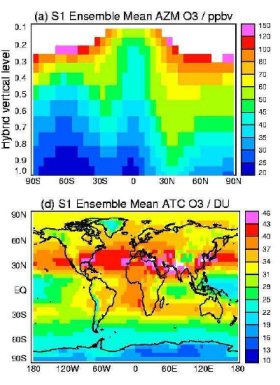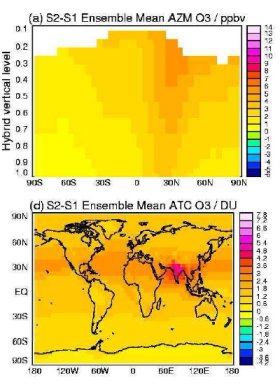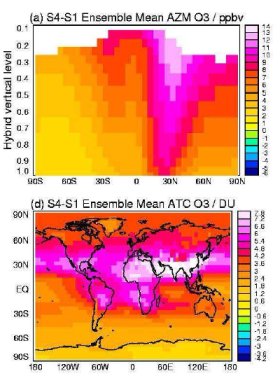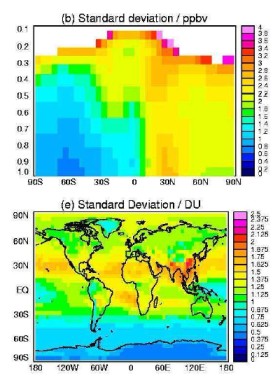 > ACCENT en > Nr 8 April 2006 Ozone & N2 cycle > R: background-ozone & R-NO2
> ACCENT en > Nr 8 April 2006 Ozone & N2 cycle > R: background-ozone & R-NO2
|
Background ozone and long distance transport of nitrogen oxidesAlthough many measures for improvement of the air quality have been taken in the past, nitrogen oxides are still a problem in the air around us. With this comes the problem of ozone in the atmosphere at ground level. The main reasons are nitrogen monoxide and nitrogen dioxide in urbanised areas. But independent from the decreasing number of ozone smog events in Europe the background concentration of ozone is increasing.
|
To determine concentrations of background ozone it is important to select air masses that are largely unaffected by local or regional influences. This can be done either by looking for elevated concentrations of indicator pollutants such as carbon monoxide or by using a computer simulation to calculate where an air mass has originated. If the air contains high concentrations of pollutants or has passed over a populated area then it is not classed as background. One such station where background ozone is measured is Mace Head, on the west coast of Ireland (see ACCENT magazine Nr. 2 - Research).
|
|
Close to the cities, the ozone concentrations shows in particular on warm summer days a typical pattern of maxima and minima. |
|
It has become increasingly apparent that transport of pollution around the globe has a big impact on background ozone concentrations in Europe and elsewhere. To investigate the transport of ozone and the ingredients that make ozone, a specially equipped British research plane made a number of flights over the Atlantic in the summer of 2004 (the ITOP - Intercontinental Transport of Ozone and Precursors - campaign). |
During the ITOP experiment among other things CO, ozone, and peroxy radicals (HO2 + RO2) were measured. A number of polluted air masses were encountered where concentrations of all three mentioned species were higher in the plume than outside of it (see figures). The fact that levels of peroxy radicals are higher in the polluted air tell us that it is photochemically active. This is just one example of intercontinental transport of not just ozone but air masses that are making ozone and bringing the ingredients to make ozone across long distances and enhancing background ozone.
|
|
|
|
|
Although reductions in emissions have been effective in reducing peak level ozone, European background ozone levels are influenced by transport of ozone and ozone precursors from other continents. The pollution that is emitted on one side of the globe can affect the air quality on the other. |
|
Ozone concentrations depend on nitrogen oxide emissions as shown in the graph on the left but not only on the emissions in our region as we have seen. Therefore we are interested in how the global emissions and the levels for background ozone are going to develop. In order to answer this question ACCENT coordinated a joint study modeling the ozone trends up to 2030 in 25 different computer models. |
|
The results range in a global average from 5% decrease to 6% increase or even 15% increase. This is a wide uncertainty range. But it becomes understandable because apart from the unknowns about future human emissions also the impacts of climate change play a major role for our atmosphere. Assuming that the average temperature of the Earth will be 0.7°C higher in 2030 the dynamics and the conversion rates in the chemistry of the atmosphere can change. The following maps show model results. Please click on them to make them larger. (60 - 80 K)
|
|
|
|
|
|
Summary: Europe can be affected by an increase of background ozone because of an increase in nitrogen oxide emissions caused by human activities and global warming in other regions in the world. This would be in the range of a few parts per billion and be less critical for our health than peak values on ozone smog days, which can be around 100 ppb near to the ground. However, the worldwide increase causes an additional and relevant greenhouse effect, since ozone is a much stronger greenhouse gas than carbon dioxide.
|
Authors:
|



